This has been on my To Do list for far too many years. I kept putting it off as a “what’s the point” exercise. Well, after an encouraging discussion with Gwen Riley Jones a couple of weeks ago, about less toxic processes, I thought I might as well give it a go.
There are plenty of blogs, social media posts and YouTube clips of the process, many with mixed results, partly what had put me off for so long. Why bother going through he effort for poor weak flat negatives…
This evening after my first attempts, Gerald Figal, over on Facebook reminded me about the Caffenol Cookbook, available for download here. I had downloaded it to my mobile ages ago and forgot all about it… better late than never. I’ll have a read tonight.
Anyway, back to today’s attempts. I always have spare rolls of film to test that have been thrown in a darkroom drawer, or still left to finish in some camera or another.
I chose a roll of medium format Ilford Delta 400 which had been in the Koni Omega Rapid camera and a 35mm roll that was still in the Horizon 202 panoramic camera. Turns out the 120 roll was shot over two years ago and the 35mm started last summer.
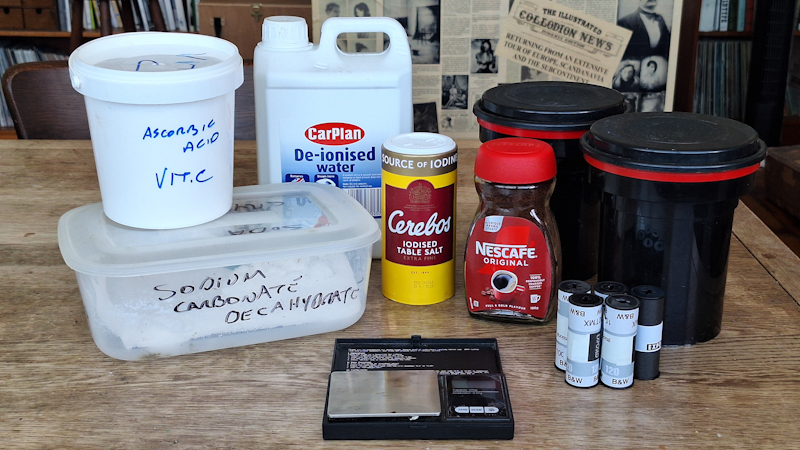
Most Caffenol recipes suggest the cheapest instant coffee available. I opted for Nescafe Classic, far from cheap, but high in Robusta coffee beans which apparently has more Caffeic Acid than Arabica beans. Worth a try, stacking the odds in my favour.
Ascorbic acid (Vit C) and Sodium Carbonate (Soda Crystals) I already have as they are used elsewhere in the darkroom. The ionised salt, to prevent film base fog in faster films, is found easily at the supermarket.

I don’t recall anyone mentioning NOT to add all the ingredients at once. I dissolved the coffee first with a little warm water then added the rest of the water followed by salt, Vitamin C and finally all the soda crystals. There was a steady eruption of foamy stinky coffee mixture from out of the jug. Glad I had it in a large darkroom tray. I wish I’d take a pic. Like a great big milkshake. Binned it and made another far more slowly.
10 minute development at 20 degree C. Continuous inversions for first minute then ten every minute. Washed/stopped well before my standard Hypam fixer.
120 roll film first. Not bad. I was expecting low contrast negatives.

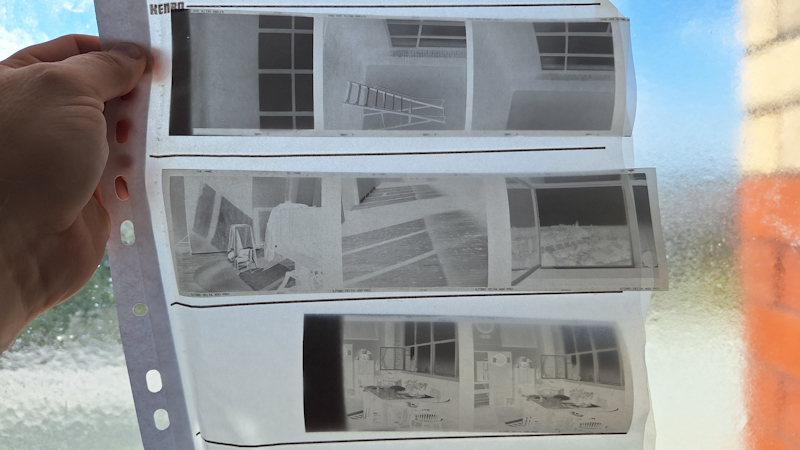
The 35mm though was far denser, I’m unsure if it’s base fog or over development. The solution may have warmed up a little in the sunny studio and I didn’t account for the increased temp? Maybe?


I didn’t have any variable contrast Resin Coated paper so I went for the ORWO Universal that was so forgiving with poor negs not so long ago. I didn’t dwell on the 35mm film, especially as it showed evidence of sprocket hole bleed.
So I moved on to the more promising medium format roll of 6×7.
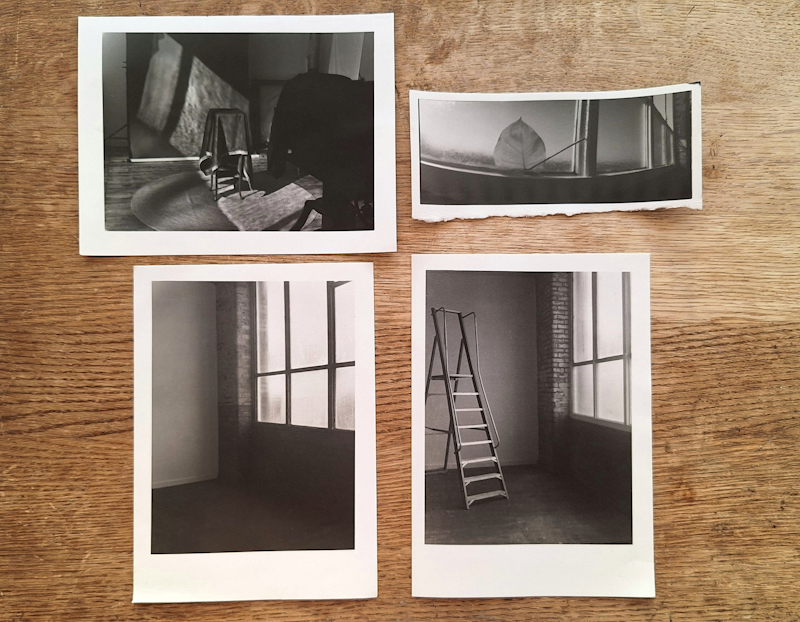
I quite like this ladder image. Again these are nowt special, just test rolls when each camera was bought.
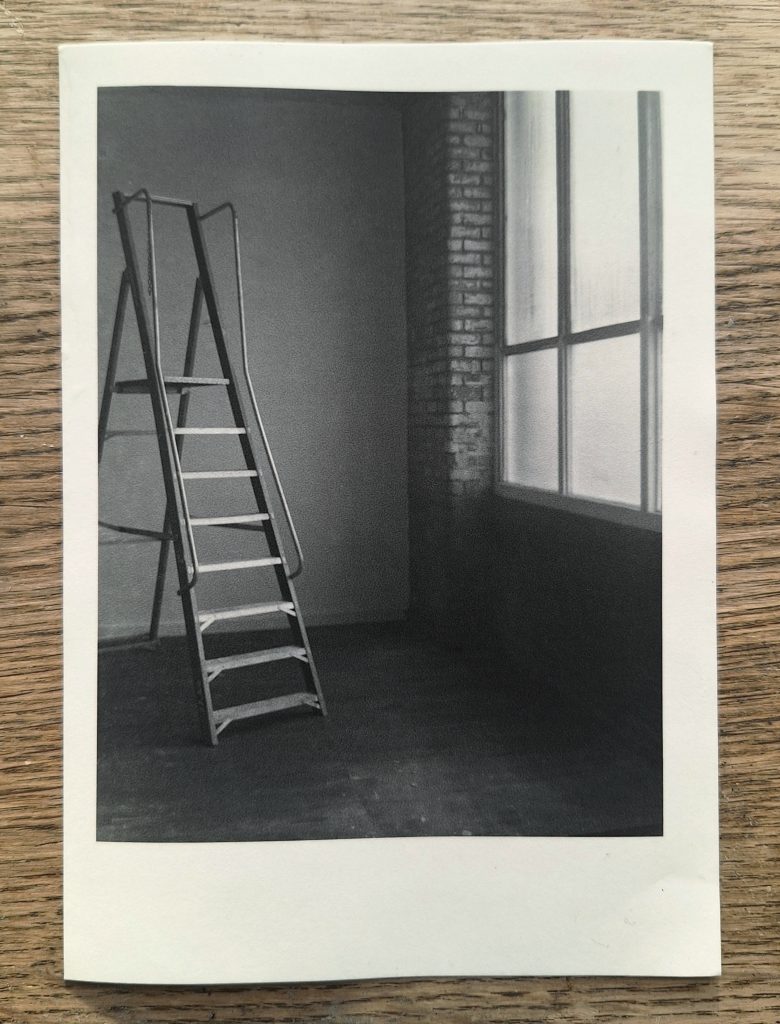

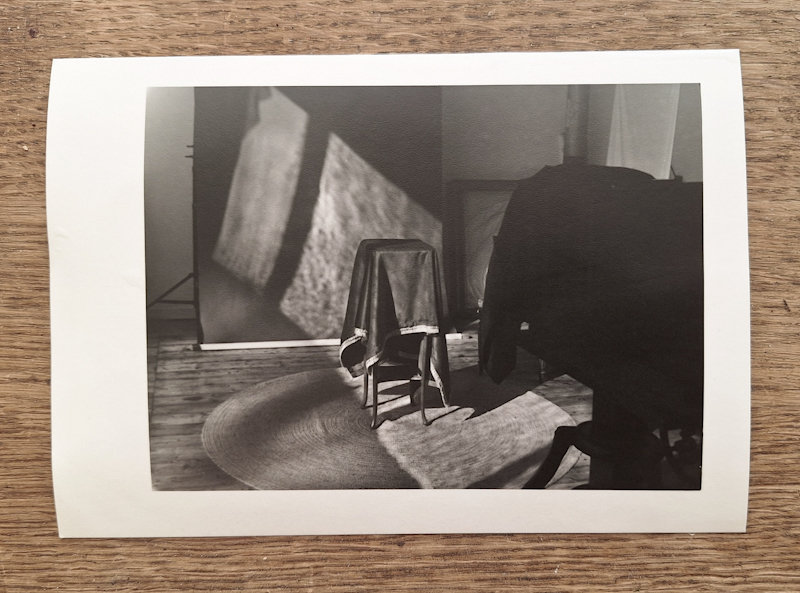
Again I’d like to review these with some variable contrast RC paper. (I was reluctant to use FB just yet).
My first thoughts on Caffenol. Yes it works, as proven by so many before, but is it really that much less toxic? Probably yes. I wonder if anyone has done any full on studies of coffee plantation, processing, packaging, shipping, repackaging and costs. The ammount of coffee, vit c and soda crystals used per film compared to my bottle of Kodak HC110, which will last me a few more years.
Especially when there are so may variables using Caffenol as a developer. My Kodak dev has been researched and manufactured to give controlled results. I guess the same could be done with Caffenol, with some patience and expense.
I think I can see the appeal for experimental photography and expired film but not sure I’d want to rely on it for fresh film at today’s prices. Not until I can get repeatable consistent results at least.
Is it cheaper? Not by much I suppose. I’d have to try the cheapest coffee available and see what happens. Again it seems such a waste. I have read of people using used coffee grounds, but again how do you standardise that. And the use of fruit juices wine, beer, beetroot, spinach and other organics instead of the coffee but again I’d rather use those products for eating and drinking. Amd if you can swap that out, how important are those in the development process? More reading is needed.
And the argument of being able to develop film in an emergency with household ingredients when you don’t have film developer… when is that going happen? Amazon deliver usually next day 🙂 sorry being a bit flippant there.
I would give Caffenol another go, but next time with fresh film and precise exposures rather than the sunny sixteen rule which these two rolls were taken with. So a bit of a more controlled test.
And I would use it for experimental random results on occasion, maybe.
Thanks for sharing your results. I agree with your reservations about true sustainability, consistency and price. However, I use Caffenol to introduce new film photographers to developing their own film. The accessible kitchen ingredients make a good starting point and are less intimidating than darkroom chemicals.
I’m grateful to everyone exploring more sustainable photographic processes. Kodak’s history of environmental damage places a responsibility on all of us to look for better ways to make photographs.
(Not sure washing soda is particularly ‘safe’ either. I’m always amazed that it is sold with no safety warnings on the bag)
Wendy
Hi Wendy,
Yep always surprised by Soda Crystals as its potentially nasty stuff.
I think if new to film photographers are aware of the inconsistency it’s fine. There’s nothing more soul destroying to a new photographer than a crappy roll of processed film, regardless of how it’s been processed. I’ll be giving Caffenol another go for sure.
T